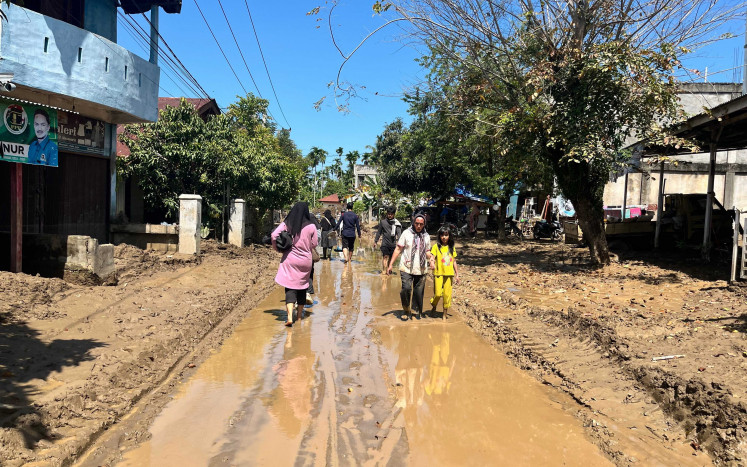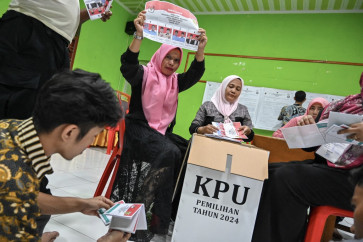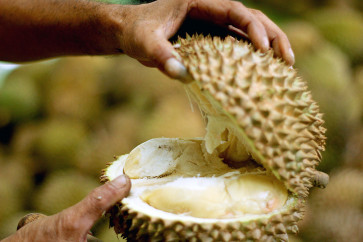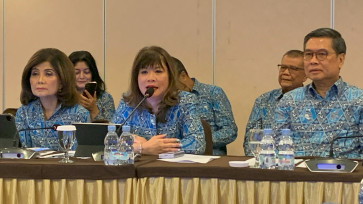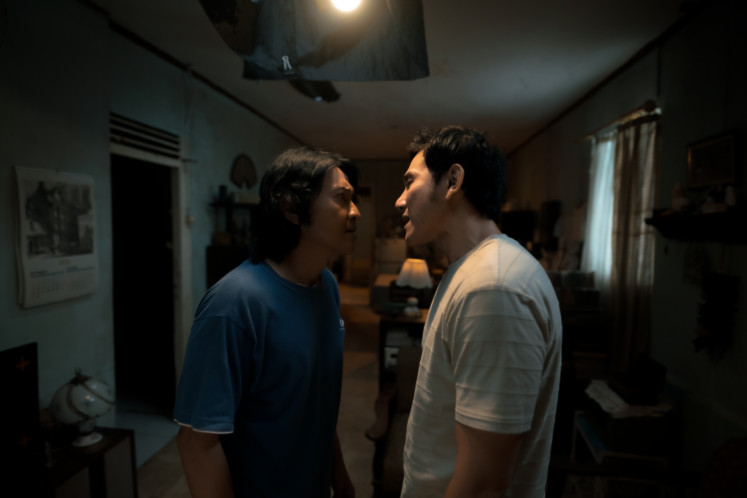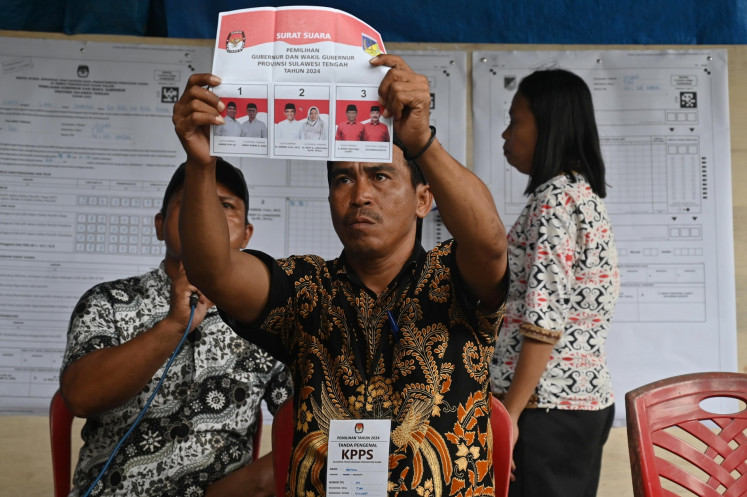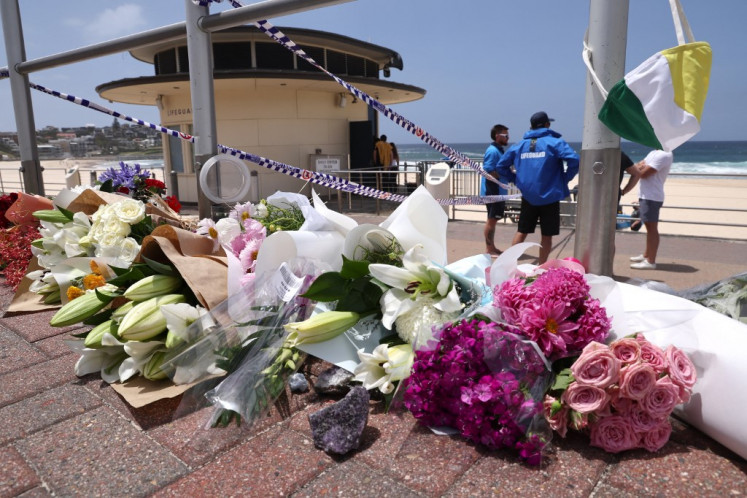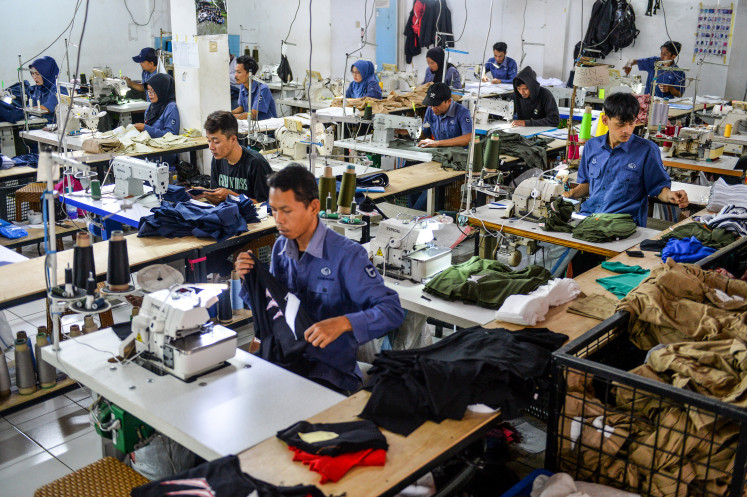Popular Reads
Top Results
Can't find what you're looking for?
View all search resultsPopular Reads
Top Results
Can't find what you're looking for?
View all search resultsMinistry, WBI Foundation introduce ASEAN batik motifs
Thee batik motifs were designed using the floral richness from all ASEAN member states to represent harmony in diversity and uniqueness.
Change text size
Gift Premium Articles
to Anyone
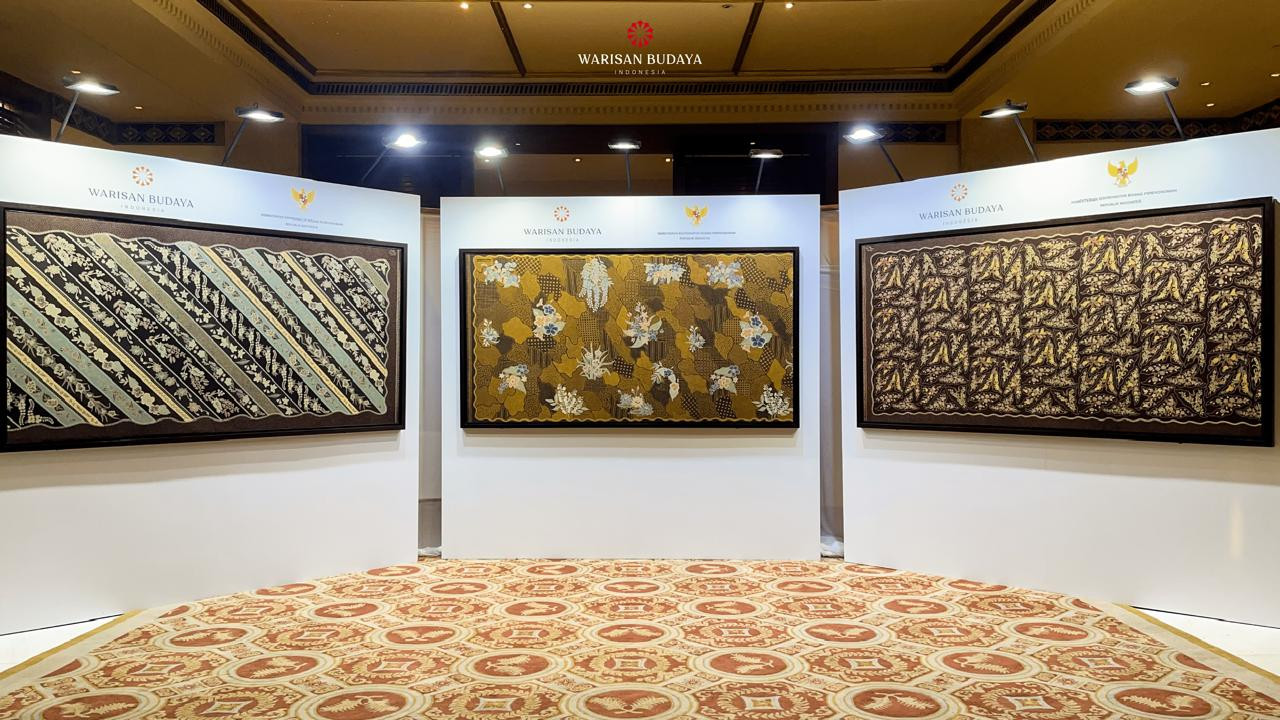 Three collaborative ASEAN batik motifs, Batik Udan Liris Sewelas Nagari (left), Batik Sekar Jagad Sewelas Nagari (center) and Batik Lumbon Sewelas Nagari, are displayed during their reveal in Dharmawangsa, South Jakarta, on Aug. 27, 2024. The batik motifs were a collaboration between the Office of the Coordinating Economic Minster and the Warisan Budaya Indonesia Foundation to commemorate the 57th anniversary of ASEAN. (Courtesy of Warisan Budaya Indonesia Foundation/-)
Three collaborative ASEAN batik motifs, Batik Udan Liris Sewelas Nagari (left), Batik Sekar Jagad Sewelas Nagari (center) and Batik Lumbon Sewelas Nagari, are displayed during their reveal in Dharmawangsa, South Jakarta, on Aug. 27, 2024. The batik motifs were a collaboration between the Office of the Coordinating Economic Minster and the Warisan Budaya Indonesia Foundation to commemorate the 57th anniversary of ASEAN. (Courtesy of Warisan Budaya Indonesia Foundation/-)
T
he Office of the Coordinating Economic Minister and the Warisan Budaya Indonesia Foundation revealed on Tuesday three collaborative batik designs with the theme “Collaborative Batik from Indonesia for ASEAN” as part of the 57th anniversary celebrations of ASEAN.
The batik motifs were launched during “A Tribute from Indonesia to ASEAN” event held by the foundation in Dharmawangsa, South Jakarta, on Tuesday by inviting representatives from friendly countries to observe the collaborative batik motifs, the foundation said in a press statement.
The batik motifs will be displayed at the ASEAN Secretariat building in South Jakarta.
The three batik designs are called Batik Lumbon Sewelas Nagari, Batik Udan Liris Sewelas Nagari and Batik Sekar Jagad Sewelas Nagari. These designs are specially made by Indonesian batik makers as a symbol of solid unity among the 10 ASEAN member states plus Timor-Leste, which has been admitted in principle pending full membership.
The designs use classic batik motifs combined with the floral richness of ASEAN member states in the form of jasmine from Indonesia and the Philippines, hibiscus from Malaysia and Timor-Leste, lotus from Vietnam, orchid from Singapore, ratchapruek (Cassia fistula) from Thailand, padauk (Pterocarpus macrocarpus) from Myanmar, romduol (Sphaerocoryne lefevrei) from Cambodia and simpor (Dillenia suffruticosa) from Brunei Darussalam.
Each of them has its own form, color and uniqueness, which are different from the others but united in a beautiful harmonization.
The motifs selected for the ASEAN batik have beautiful philosophical meanings.
Sekar Jagad Sewelas Nagari depicts the beauty of ethnic group diversity in the ASEAN member states, while maintaining closeness with each other through similarities in their arts and culture. Udan Liris Sewelas Nagari symbolizes prayers and hopes among ASEAN member states to have a better life in the future. Meanwhile, Lumbon Sewelas Nagari illustrates the harmonious relationship between man and nature, while at the same time honoring social values.
Senior batik maker Nur Cahyo was entrusted with working on the collaborative batik motifs. Hailing from the Central Java batik center of Pekalongan, Nur comes from generations of famed batik makers.
Nur skillfully combines colors and motifs for his batik to look beautiful. He also makes his own natural dyes for coloring from various types of wood to create unique colors for his batik. The types of wood include secang (Indian redwood), mahogany, tingi (spurred mangrove), tegeran (Cudrania javanensis), jalawe (Terminalia bellirica) and jambal (copperpod).
Young batik maker Azmi Alqamad Aqsa was also involved in making the collaborative batik motifs.
Other than the ASEAN collaborative batik designs, the event also provided space for Indonesian designers working with traditional fabrics to promote their creations and develop various new techniques to follow the market’s trend.
The designers included Didi Budiardjo, Carmanita, Mel Ahyar, Didiet Maulana, Nita Seno Adji, Wilsen Willim, Akhsan, Putro, Wastra Chandra, Sarita and Parang Kencana.
Also being presented were other handicrafts such as bag accessories from Yukako and Mariko and jewelry from EPA and Ruang Jiwa.

